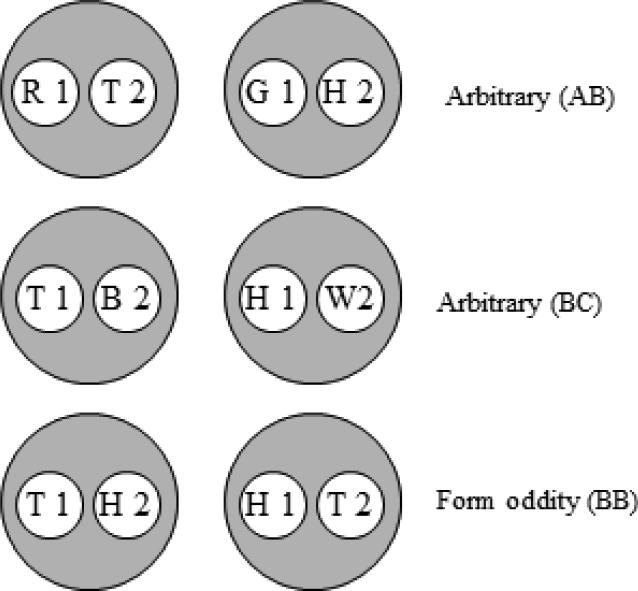Figure 5.
The six stimulus classes hypothesized to result from arbitrary (AB and BC) form oddity (BB) successive matching training in Experiment 2. Letters denote the nominal stimuli (R = red, G = green, B = blue, W = white, T = triangle, H = horizontal) and numbers denote ordinal position in a trial (1 = first (sample), 2 = second (comparison)).

